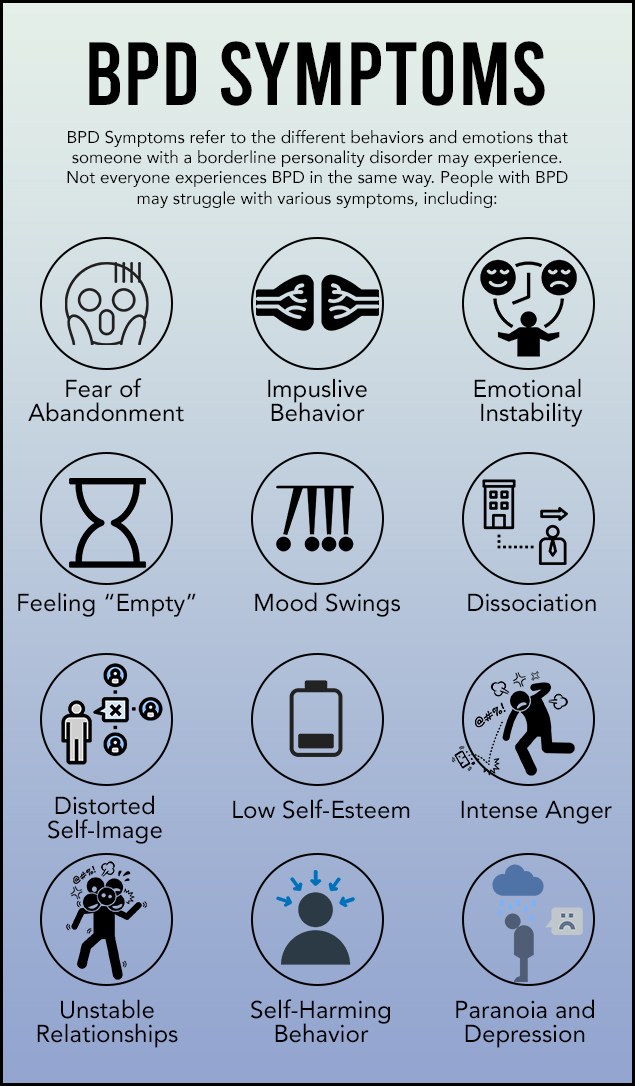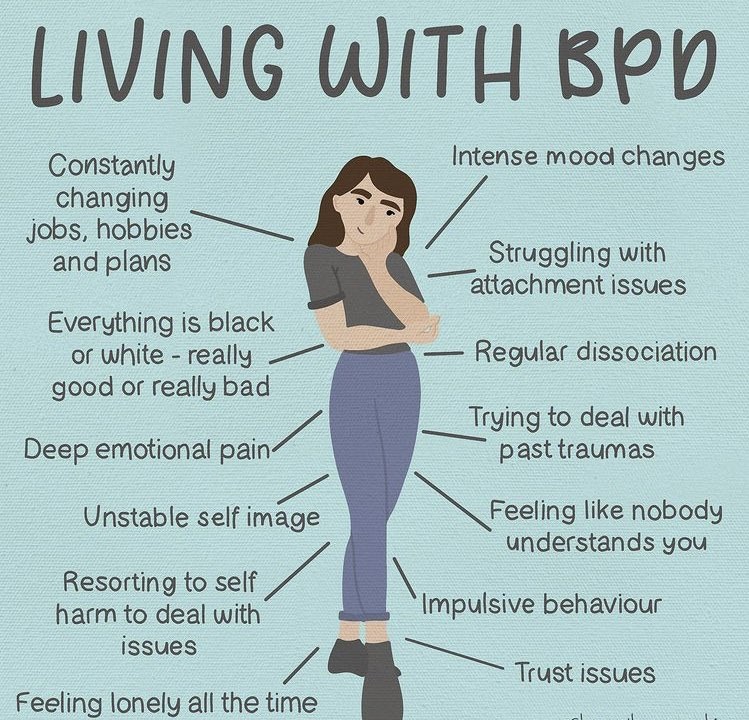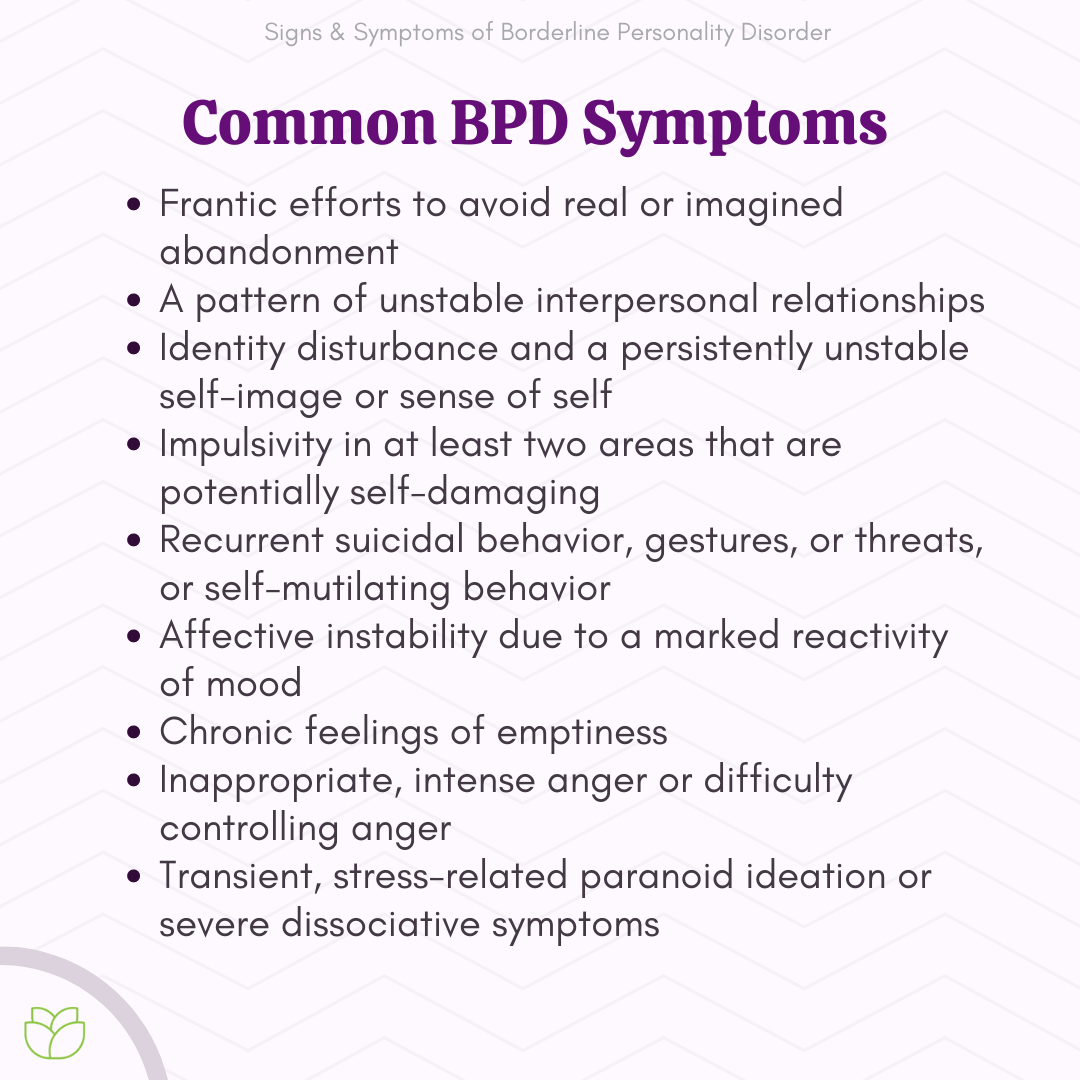Do you find yourself trapped in a whirlwind of intense emotions, unstable relationships, and impulsive behaviors? Borderline Personality Disorder (BPD) is a serious mental health condition that impacts a person's ability to regulate emotions, often leading to significant challenges in various aspects of life.
BPD, often characterized by extreme mood swings and a pervasive sense of instability, affects how individuals perceive themselves and interact with others. Understanding the intricacies of this disorder is crucial for both those who experience it and those who seek to support them.
Borderline Personality Disorder (BPD) is a complex mental health condition that significantly impacts an individual's emotional regulation, self-image, and relationships. The diagnostic criteria for BPD, as outlined by the Diagnostic and Statistical Manual of Mental Disorders (DSM-5), include a pattern of instability in interpersonal relationships, self-image, and affect, and marked impulsivity, beginning by early adulthood and present in a variety of contexts.
- Vegan Movies Inspire Educate Watch Guide Streaming
- Dive Into Mathplayzone Fun Games Learning Adventures
Individuals with BPD often experience intense emotions, such as fear of abandonment, anger, depression, and anxiety. These emotions can be overwhelming and lead to difficulties in maintaining stable relationships, a distorted sense of self, and impulsive behaviors. The common signs include efforts to avoid real or imagined abandonment, unstable relationships, identity disturbance, impulsivity in at least two areas that are potentially self-damaging (e.g., spending, sex, substance abuse, reckless driving, binge eating), recurrent suicidal behavior, gestures, or threats, or self-mutilating behavior, affective instability due to a marked reactivity of mood, chronic feelings of emptiness, inappropriate, intense anger or difficulty controlling anger, and transient, stress-related paranoid ideation or severe dissociative symptoms.
The causes of BPD are multifaceted and may involve a combination of genetic, environmental, and social factors. While there isn't one single cause, research indicates that experiences such as childhood trauma, neglect, or adverse childhood experiences can increase the risk of developing BPD. Genetics and brain structure may also play a role, contributing to the individual's vulnerability to the disorder. Additionally, a history of abuse, whether physical, emotional, or sexual, is often present in the backgrounds of individuals with BPD.
The diagnosis of BPD typically involves a thorough evaluation by a mental health professional, such as a psychiatrist or psychologist. This evaluation includes a clinical interview, where the professional assesses the individual's history, symptoms, and behavior patterns. It's essential to note that the symptoms of BPD often begin during the teen years, but the diagnosis typically isn't made until early adulthood. To be diagnosed with BPD, an individual must meet the criteria outlined in the DSM-5, which requires the presence of five or more of the diagnostic criteria.
- Watch South Indian Films Dubbed In Hindi Netflix More
- 2025 Kannada Movies Your Ultimate Guide To Releases Reviews More
Several treatment options are available for BPD, aiming to alleviate symptoms and improve the individual's overall quality of life. Psychotherapy, particularly Dialectical Behavior Therapy (DBT), is considered the gold standard treatment. DBT helps individuals develop skills to manage emotions, cope with distress, and improve interpersonal relationships. Other therapies, such as Cognitive Behavioral Therapy (CBT) and psychodynamic therapy, may also be beneficial. Medication, including antidepressants, mood stabilizers, and antipsychotics, can be prescribed to manage specific symptoms like mood swings, anxiety, or psychosis.
The impact of BPD on relationships can be profound. Individuals with BPD often struggle with forming and maintaining healthy, stable relationships. Fear of abandonment and intense emotional reactions can lead to a cycle of idealization and devaluation of others. This cycle can strain relationships with family, friends, and romantic partners, creating significant distress. These behaviors can also result in impulsive actions and problems in relationships with others.
BPD is a mental illness that severely impacts a persons ability to regulate their emotions. This loss of emotional control can increase impulsivity, affect how a person feels about themselves, and negatively impact their relationships with others. Early recognition of borderline personality disorder symptoms and signs can be important for coping with the condition.
Understanding the signs and symptoms of BPD is crucial for early recognition and intervention. Common symptoms include:
- Fear of abandonment
- Unstable relationships
- Identity disturbance
- Impulsivity
- Suicidal behavior or self-harm
- Emotional instability
- Chronic feelings of emptiness
- Intense anger
- Paranoid ideation or dissociative symptoms
The emotional experience of someone with BPD can fluctuate rapidly, shifting from periods of intense joy to moments of despair or anger. These mood swings can be triggered by various factors, including interpersonal stressors, environmental changes, or internal thoughts and feelings. The intensity and frequency of these mood changes can significantly impact daily functioning.
Distinguishing BPD from other mental health conditions, such as bipolar disorder, is essential for accurate diagnosis and effective treatment. While both conditions involve mood swings, BPD is primarily characterized by emotional dysregulation, instability in relationships, and a distorted sense of self. Bipolar disorder, on the other hand, is characterized by distinct episodes of mania and depression. There are also differences in how triggers affect the individual.
The impact of BPD isn't limited to individual experiences; it also influences relationships. Efforts to avoid real or imagined abandonment and intense bouts of anger, depression, or anxiety can strain connections with others. Unstable relationships and distorted self-image can be hallmarks, leading to emotional turmoil for those affected and their loved ones.
Treatment for BPD is often a journey, and the duration and intensity can vary depending on the individual's response to treatment. While it is considered a lifelong pattern, the prognosis is generally optimistic. With appropriate therapy and support, individuals can learn to manage their symptoms, develop coping skills, and experience improved quality of life. Studies show that the overall rate of remission (improvement of symptoms) among people treated for BPD can be high, and symptoms can improve with time.
It is important to remember that the experiences of living with borderline personality disorder are unique to each person. The types and severity of symptoms may differ from person to person because people have different predispositions and life histories, and symptoms can fluctuate over time. The recovery journey may include setbacks and require a multi-faceted approach. However, with the right support and treatment, individuals with BPD can find hope and healing.
For those seeking to learn more, various resources are available. The National Institute of Mental Health (NIMH) provides valuable research and information on BPD. Reputable organizations like the Cleveland Clinic offer comprehensive insights into the signs, causes, and treatment options. Additionally, numerous support groups and online communities offer peer support and a sense of belonging for those living with BPD.
Men may be equally affected by BPD, but are commonly misdiagnosed with PTSD or depression.
Recent research suggests that men may be equally affected by BPD, but are commonly misdiagnosed with PTSD or depression. It is important to recognize that BPD does not discriminate based on gender.
Individuals with BPD can experience a great sense of instability and insecurity. The nine recognized symptoms associated with borderline personality disorder: There are nine recognized symptoms associated with borderline personality disorder, and to be diagnosed, at least five need to be present. The symptoms of BPD often start during the teen years and can be a bit different for each person.
The symptoms of BPD can be grouped into 4 main areas: In summary, BPD is a complex mental health condition that can make it hard to regulate strong emotions. The types and severity of BPD symptoms may differ from person to person because people have different predispositions and life histories, and symptoms can fluctuate over time. All personality disorders are lifelong patterns, but there is now more optimism about the more distressing aspects of borderline personality disorder.
Experiences of living with BPD are unique to each person. Treatment options for BPD can lessen symptoms and improve your quality of life.


